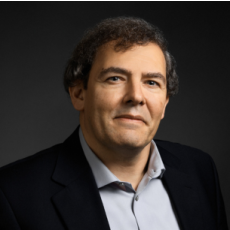SMSbiotech is a biotech company based in California, specializing in regenerative medicine through the discovery and development of a novel human stem cell known as the Small Mobile Stem (SMS) cell.
2025 is a pivotal year for SMSbiotech…
Absolutely! We have received approval to move forward with our Phase 1 clinical trial in Australia, which will involve 18 mild to moderate COPD (chronic obstructive pulmonary disease) patients. The approval itself is a significant achievement because the cells we are working with are largely unknown to the scientific community and regulators. While we had presented these cells to the FDA in a pre-IND meeting and had one publication back in 2013, the real breakthrough came when we received six patents for the technology involving SMS cells and applied for several more. The regulatory process was challenging, as these cells have a completely different mechanism of action compared to typical cell therapies, and it took a lot of back and forth to gain approval.
The success of this COPD therapy project, that targets the number 3 killer of the world with over 400 million affected worldwide, is driven by over a decade of research, numerous experiments, and the unwavering belief in the safety and efficacy of Small Mobile Stem (SMS) cells, which have shown no adverse reactions in past testing and present the opportunity for reversing the disease by rebuilding the damaged tissue. This approval marks a major milestone for us as we move closer to bringing this therapy to patients.
Since you are now entering clinical trials, could you remind us of the safety profile of these cells?
SMS cells have a distinct safety profile, as they stimulate the body’s own stem cells rather than building foreign tissue. This means that the tissue formed is naturally compatible with the host, offering a major advantage in terms of safety. We know these cells can regenerate tissue, and we have also discovered that they can be produced in large quantities, stored easily, and even nebulized directly to the lungs, which adds to their practicality. In addition, we have been testing these cells against other conditions, including joint repair, where we have seen impressive initial results in companion animals, including aged dogs. This opens up the possibility of using the cells for various applications beyond COPD, giving us confidence in their broader potential for tissue regeneration.
The fact that we can store these cells at refrigerated temperatures for at least three weeks, a development we did not anticipate, further enhances their appeal. As we continue to expand our research, we are exploring their potential for human use in other areas, with promising preclinical results so far.
What are the expected timelines and objectives of the Phase 1 trial?
The trial will start with the first cohort of patients, who will receive the lowest number of cells, and the study will progress through three cohorts, each receiving higher doses. The primary focus is safety, but we will also be looking for signs of efficacy, including respiratory and blood parameters and lung tissue changes through CT scans.
While the main goal is to ensure safety, we are also hopeful to gather preliminary efficacy data that could be useful for presenting to regulatory bodies like the FDA. This could lead to approval for compassionate use, allowing us to provide treatment to patients outside of clinical trials, especially for those who might not qualify for the trial due to strict inclusion and exclusion criteria. If we achieve good safety results, we anticipate being able to provide treatment to COPD patients around the world before commercial approval.
We anticipate that we will have preliminary safety data about four months into the Phase 1 trial, which is expected to last eight months in total. In the meantime, we will also be seeking approval from other countries with more flexible regulatory environments, potentially allowing us to treat patients in those regions earlier than in the U.S. This is critical because many COPD patients are unlikely to meet the inclusion criteria for the clinical trial, and compassionate use could offer them a chance to benefit from this treatment sooner.
Once we have the safety data, we can begin providing treatment to patients who are suffering from COPD while we continue the clinical trial. This will be a significant step forward, enabling us to save lives even before commercial approval is granted.
Do you anticipate beginning trials for other indications soon?
Yes, we are actively working on expanding the applications of our technology. Recently, we visited the Cleveland Clinic in Florida, where we discussed the possibility of conducting Phase 2 trials at their site. They have shown strong interest in conducting compassionate use studies in the United States, and we expect to collaborate with them on that. While we are focused on COPD for now, we are also preparing to present preclinical data on other potential applications, such as joint treatments, to the FDA. Although we likely will not start Phase 1 trials for these indications next year, we are gathering the necessary preclinical data to eventually pursue those applications.
Are you comfortable with the amount of financial backing you have secured to support you through this process?
Financing in the startup biotech space can be unpredictable, and we have had our ups and downs. While we experienced a financial drought recently due to delays in regulatory approval, we were able to secure substantial financing and have seen strong interest from the investment community. At this moment, we are in a good financial position, which is a relief, as it allows us to focus more on the science and less on fundraising. The key challenge with financing is ensuring that we have the right people and infrastructure to spend the funds effectively. We have always been cautious about only taking on as much capital as we need to invest wisely in our R&D and clinical activities.
Looking ahead, we recognize that the need for our technology is immense, and the potential for growth is substantial. Our goal is to transition from an R&D-focused company to one that can produce and distribute large quantities of cells worldwide. We are in the process of setting up a new bioproduction facility and are actively seeking partners who can help us build the infrastructure needed to scale production. With the growing demand for regenerative therapies, we are confident that the financing will be there to support our mission to help millions of patients.





